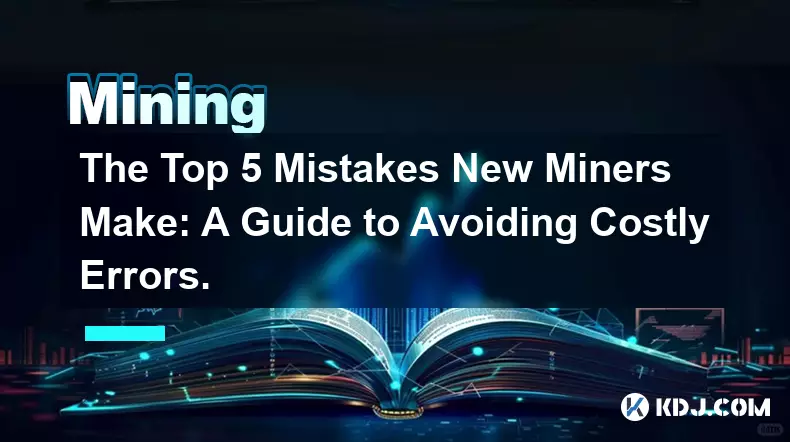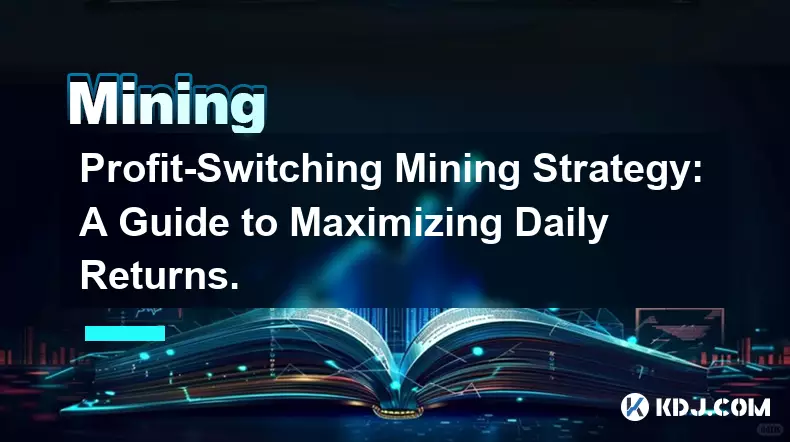-
 bitcoin
bitcoin $107015.826941 USD
-2.18% -
 ethereum
ethereum $3637.352324 USD
-5.18% -
 tether
tether $0.999831 USD
-0.02% -
 xrp
xrp $2.338078 USD
-6.23% -
 bnb
bnb $998.272150 USD
-6.97% -
 solana
solana $167.598257 USD
-10.12% -
 usd-coin
usd-coin $0.999863 USD
0.01% -
 tron
tron $0.282573 USD
-5.09% -
 dogecoin
dogecoin $0.169891 USD
-7.39% -
 cardano
cardano $0.557554 USD
-7.03% -
 hyperliquid
hyperliquid $39.914802 USD
-5.85% -
 chainlink
chainlink $15.414549 USD
-9.97% -
 bitcoin-cash
bitcoin-cash $510.361911 USD
-4.26% -
 ethena-usde
ethena-usde $0.999194 USD
-0.03% -
 stellar
stellar $0.282092 USD
-6.07%
How to set up an Antminer S19?
Unbox the Antminer S19, connect PSU and Ethernet, power on, access its IP via browser, log in with default credentials, configure mining pool settings, and monitor performance.
Oct 26, 2025 at 05:19 pm

Unboxing and Initial Setup
1. Carefully remove the Antminer S19 from its packaging, ensuring all components are present—mining unit, power supply unit (PSU), power cables, Ethernet cable, and user manual.
2. Place the miner on a stable, well-ventilated surface. Avoid carpeted or enclosed areas to prevent overheating and ensure optimal airflow.
3. Connect the PSU to the Antminer using the provided DC power cables, matching the correct connectors to the designated ports on the control board.
4. Plug the PSU into a reliable power source capable of delivering the required wattage—typically 220–240V for maximum efficiency.
5. Use the included Ethernet cable to connect the miner’s network port to your router or network switch. Wi-Fi is not supported; a wired connection is mandatory.
Network Configuration and IP Access
1. Power on the PSU, which will boot up the Antminer S19. The display panel or status lights will indicate startup progress.
2. Wait for the miner to obtain an IP address via DHCP. This usually takes under two minutes.
3. Access your router’s admin interface to locate the Antminer’s assigned IP address, listed under connected devices.
4. Open a web browser and enter the miner’s IP address into the address bar to access the web-based control panel.
5. Log in using the default credentials: username root and password admin. It is critical to change these after initial login for security.
Connecting to a Mining Pool
1. Navigate to the “Miner Configuration” section in the web interface.
2. Enter the URL of your chosen mining pool. Popular pools include F2Pool, Poolin, and Slush Pool.
3. Input your wallet address or worker name as specified by the pool. Each pool has unique formatting requirements for this field.
4. Provide the pool password if required. In many cases, this can be left blank or set to “x” depending on the pool’s rules.
5. Save settings and allow the miner to reboot. Once active, the dashboard will show hash rate, accepted shares, and connection status.
Monitoring and Maintenance
1. Regularly check the miner’s temperature readings via the web interface. Ideal operating range is between 60°C and 80°C.
2. Inspect fans and heatsinks weekly for dust accumulation. Use compressed air to clean components without touching internal parts.
3. Monitor network stability. Frequent disconnects may indicate poor cabling or router congestion.
4. Update firmware only when necessary and through official Bitmain sources to avoid bricking the device.
5. Track daily earnings and power consumption to assess profitability, adjusting expectations based on electricity costs and Bitcoin’s market value.
Frequently Asked Questions
What should I do if the Antminer S19 doesn’t power on?Ensure the PSU is properly connected and receiving power. Verify that both the AC input and DC output cables are secure. Check if the PSU fan spins upon activation. If not, the PSU may be faulty or incompatible.
Why is my Antminer showing zero hash rate?This typically indicates a failure to connect to the mining pool. Confirm the pool URL, worker credentials, and internet connectivity. Also, verify that the pool service is operational and not undergoing maintenance.
Can I use a third-party power supply with the S19?Yes, but only high-efficiency units rated for at least 1350W and compatible with the S19’s power input specifications. Mismatched PSUs can damage the miner or reduce performance.
How loud is the Antminer S19?The S19 operates at approximately 75–78 decibels, comparable to a vacuum cleaner. Place it in a dedicated space away from living areas to minimize noise disruption.
Disclaimer:info@kdj.com
The information provided is not trading advice. kdj.com does not assume any responsibility for any investments made based on the information provided in this article. Cryptocurrencies are highly volatile and it is highly recommended that you invest with caution after thorough research!
If you believe that the content used on this website infringes your copyright, please contact us immediately (info@kdj.com) and we will delete it promptly.
- Milk Mocha's $HUGS: The Presale Meme Coin Redefining Community and Value
- 2025-11-04 17:50:02
- Dogecoin, Lyno AI, and Growth Potential: A New Era for Crypto?
- 2025-11-04 17:45:01
- DASH Price Surges Amid Aster Listing: Market Confidence Returns?
- 2025-11-04 17:45:14
- Crypto Price Predictions: DeFi Coins to Watch in 2026 – Will MUTM Outshine XRP?
- 2025-11-04 17:50:01
- Rare Coin Mania: The Red Coin Collectors Rush!
- 2025-11-04 17:55:02
- Shiba Inu, Blue Kachina, and a Message: What's the Buzz?
- 2025-11-04 17:55:02
Related knowledge

Mining Hardware Longevity Guide: Essential Tips to Make Your GPUs Last.
Nov 01,2025 at 04:00pm
Mining Hardware Longevity Guide: Essential Tips to Make Your GPUs LastAs cryptocurrency mining continues to attract both hobbyists and professionals, ...

The Top 5 Mistakes New Miners Make: A Guide to Avoiding Costly Errors.
Nov 01,2025 at 10:18am
The Top 5 Mistakes New Miners Make: A Guide to Avoiding Costly Errors Entering the world of cryptocurrency mining can be both exciting and overwhelmin...

The Miner's Guide to Market Cycles: When to Hold and When to Sell.
Nov 03,2025 at 07:55pm
The Miner's Guide to Market Cycles: When to Hold and When to Sell Bitcoin mining has evolved from a hobbyist pursuit into a highly competitive, capita...

Profit-Switching Mining Strategy: A Guide to Maximizing Daily Returns.
Nov 03,2025 at 11:55am
Understanding Profit-Switching in Cryptocurrency Mining1. Profit-switching is a dynamic mining strategy that automatically redirects computational pow...

Setting Up Mining Alerts: A Guide to Monitoring Your Rigs 24/7.
Nov 03,2025 at 02:54pm
Why Continuous Monitoring Is Crucial in Cryptocurrency Mining1. Cryptocurrency mining operations rely heavily on hardware stability and network connec...

Understanding Pool Luck and Variance: An Essential Guide for Miners.
Nov 03,2025 at 10:01pm
What Is Pool Luck in Cryptocurrency Mining?1. Pool luck refers to the statistical measure of how frequently a mining pool finds blocks compared to the...

Mining Hardware Longevity Guide: Essential Tips to Make Your GPUs Last.
Nov 01,2025 at 04:00pm
Mining Hardware Longevity Guide: Essential Tips to Make Your GPUs LastAs cryptocurrency mining continues to attract both hobbyists and professionals, ...

The Top 5 Mistakes New Miners Make: A Guide to Avoiding Costly Errors.
Nov 01,2025 at 10:18am
The Top 5 Mistakes New Miners Make: A Guide to Avoiding Costly Errors Entering the world of cryptocurrency mining can be both exciting and overwhelmin...

The Miner's Guide to Market Cycles: When to Hold and When to Sell.
Nov 03,2025 at 07:55pm
The Miner's Guide to Market Cycles: When to Hold and When to Sell Bitcoin mining has evolved from a hobbyist pursuit into a highly competitive, capita...

Profit-Switching Mining Strategy: A Guide to Maximizing Daily Returns.
Nov 03,2025 at 11:55am
Understanding Profit-Switching in Cryptocurrency Mining1. Profit-switching is a dynamic mining strategy that automatically redirects computational pow...

Setting Up Mining Alerts: A Guide to Monitoring Your Rigs 24/7.
Nov 03,2025 at 02:54pm
Why Continuous Monitoring Is Crucial in Cryptocurrency Mining1. Cryptocurrency mining operations rely heavily on hardware stability and network connec...

Understanding Pool Luck and Variance: An Essential Guide for Miners.
Nov 03,2025 at 10:01pm
What Is Pool Luck in Cryptocurrency Mining?1. Pool luck refers to the statistical measure of how frequently a mining pool finds blocks compared to the...
See all articles










































































